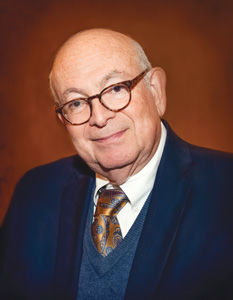Predicting new Supreme Court justice’s rulings is uncertain art
Published July 5, 2018
The resignation of U.S. Supreme Court Justice Anthony Kennedy effective July 31 has set off a firestorm of speculation, rejoicing and hand-wringing among the senators who will have to confirm his successor.
Republicans and other conservatives are popping champagne corks at the prospect that President Donald J. Trump will name a judicial conservative to the Supreme Court. Many of them hope that this new justice will vote to overturn Roe v. Wade, which grants abortion rights, the gay marriage ruling and other such issues.
Handwringing Democrats and other liberal and progressive elements are issuing dire warnings that the very things conservatives hope the new justice will do will set back social justice and civil liberties to an immense degree.While there may be merit to some of the conservative celebrations and liberal worries,history has shown that once a Supreme Court justice has been named to a life-tenured seat, he or she may issue rulings that run counter to expectations.
ADVERTISEMENT
Indeed, when the widely applauded “swing voter” Kennedy was first named by veryconservative Ronald Reagan, the president went out of his way to praise Kennedy’s conservative credentials. That very nominee cast the crucial vote upholding abortion rights and the rights of same-sex couples to marry.
President Dwight D. Eisenhower, a war hero turned Republican president, often said that his “worst appointment” was to name the Republican governor of California, Earl Warren, to the Supreme Court.That very Warren Court became the champion of the Constitution as a “living, breathing document.” The Warren Court struck down segregation in public schools as “inherently unequal,” overturning the court’s prior “separate but equal” doctrine established in the 1896 case of Plessy v. Ferguson. Warren, a decent and courageous man, was subjected to calls for his impeachmentand threats against his life.
At the peak of his popularity, President Franklin D. Roosevelt attempted to pack the Supreme Court with more liberal justices to prevent more of his New Deal programs from being declared unconstitutional by the Supreme Court. FDR was roundly rebuffed, even by key allies, when he attempted this blatant power grab.
ADVERTISEMENT
However, FDR did appoint to the high court his longtime friend and progressive ally Felix Frankfurter, who was mentored by the liberal Louis D. Brandeis, the first Jew to be named to the court. Frankfurter, who continued to informally meet with and advise FDR on New Deal policies even while on the bench, later evolved into one of the more conservative justices.
Roosevelt also named Alabama politician and former Ku Klux Klan member Hugo L. Black to the Supreme Court. Far from being the conservative justice that many legal experts had predicted, Black became a champion of the First Amendment guarantees offree speech and the press. Black famously said the First Amendment does not contain any “ifs, ands and whereases,” and anything and everything that is in printed form must be protected.
Richard M. Nixon promised his supporters a conservative candidate for a Supreme Court vacancy during his presidency. He named Harry Blackmun, who ended up writing the majority opinion in Roe v. Wade.
Regardless oftheir own beliefs, Supreme Court justices arehighly reluctant to go against the doctrine of stare decisis (Latin for “to stand by decided matters”), which relied on clear and relatively recent precedent. On that basis, Roe v. Wade has resisted numerous opportunities to be overturned.
Trump will be working from an already vetted and released list of judicial candidates who are supported by the conservative Federalist Society but who are also highly regarded for their judicial temperament and integrity.
So let us observe as this process works its way through the Senate and not prematurely start setting off celebratory fireworks or handing crepe to mourn the loss of a moderate swing vote.
We just might be surprised, as we have been so often inthe past.















